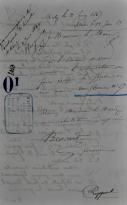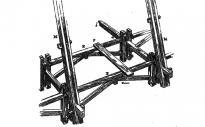L' histoire de Metz et de la Lorraine, histoire de la moselle - cartes postales anciennes de Metz - cartes postales anciennes de Moselle - histoire Moselle

Maison N°17, Rue Taison
Report of the road surveyor
Given the plan of the alignments of the houses of the city,
Given the prefectural order from 09/10/1858 about the authorisations for big highways, whose application is made for urban public highways,
Given the place,
Considering the fact that the house concerned is in projection on the alignment settled,
But that the wall opposite is in good shape, the undersigneds opinion is that Mr BROCARD, the owner of the house located at n°17, rue Taison, must be authorised to make the frontage of the aforesaid house be cut, re-roughcasted and rendered.
Under the following conditions:
The wall will be lightly cut.
It is forbidden to insert new stones or any hard element in the roughcast.
No work will be put in projection on the bare part of the front wall.
Regarding the installation of the scaffoldings, the contractor will take all the necessary precautions to insure the free circulation and the safety of the workers.
...................... in Metz, June 9th 1869
The Road Surveyor
Read and approved
The architect of the city
The scaffolding
The scaffolding appeared with the first human activities. Since this remote time, this provisory assembly (long called échafaud in French, whereas today it is called échafaudage), on which the workers work, has remained narrowly related to building works.
Since the French Revolution, the word échafaud has kept being related to the guillotine and to torture, whereas the word échafaudage has become a part of the builders vocabulary. Despite the evolution of the building methods, it still reigns in this field.
From the 16th to the 19th century
After the Renaissance, the scaffoldings were still built with round wood pieces assembled with ropes.
In the mid 18th century, illustrations in Alembert and Diderots Encyclopaedia show masons perched on a structure



